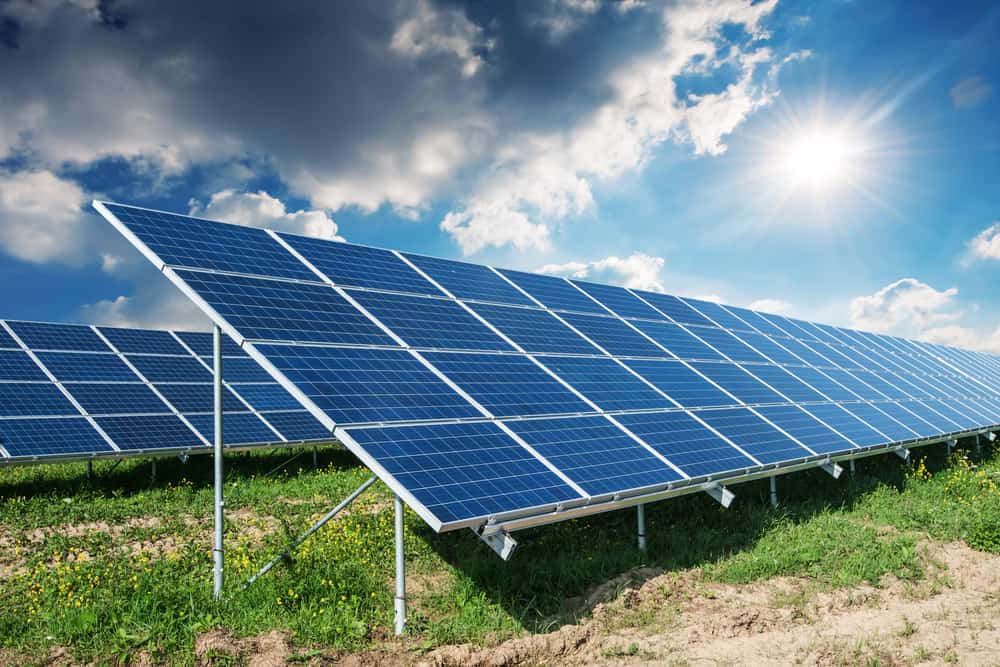Key Facts
- Solyndra was the first beneficiary of the American Recovery and Reinvestment Act. .
- The abundance of polysilicon whose prohibitive costs has been a selling point of the company, proved detrimental to it.
- Delays in the manufacturing process prevented them from being able to capitalize on the success of their earlier smartphones.
Clean Energy. From wind to hydroelectric to solar to geothermal, alternative renewable energies are some of the most highly sought-after resources in the world today. As a result, the Clean Energy sector has become one of the largest and most lucrative today. This is partly due to the many subsidies, loans, tax breaks, and programs available to Clean Energy companies from the government and top investors alike. Naturally, not every Clean Energy company can be a success. Just look at the way Solyndra failed.
Solyndra emerged as one of the most buzz-worthy solar panel manufacturers in the mid-2000s. A decade later, they were dissolved and had a billion dollars in debt. What in the world happened here? Who is to blame? And how did this company go from the top of the game to the bottom of the heap so quickly? In hindsight, it’s all clear. However, at the time, no one could have predicted a reality where Solyndra failed. Let’s take a closer look at the company, examining who they were, why they mattered, and what happened.
Quick Facts
- Year Founded
- 2005
- Founders
- Chris Gronet
- Industry
- Clean energy
- Headquarter
- Fremont, California
- Key People
- Brian Harrison (CEO), Bill Stover (CFO)
- Notable Products
- Solar panels
- Website
- http://www.solyndra.com/
Why Solyndra Mattered

In 2005, Clean Energy was still something of a novel concept. At the time, the world was far from being run by renewable energy resources. Electric cars were not as sleek and elegant (or as widely available) as they are today, few homes and businesses were equipped with solar power, and wind farms were fewer and farther between than we see presently. This made Solyndra’s potential success all the more alluring to investors, consumers, and government agencies alike.
This was especially true in light of rising material costs for existing solar panel companies. Solyndra stood apart from these competitors by using resources exclusive to their proprietary panels. (Solyndra made photovoltaic [or PV] solar systems, which we will touch on further below.) To be clear, there was nothing like Solyndra on the market. This is what made them so successful at the start. Instead of the flat solar panels, you might be picturing, Solyndra’s panels consisted of solar cells rolled into cylinders and placed on racks.
This simple action — rolling thin film solar cells into tubes instead of laying them flat — was revolutionary at the time. Not only did it get more cells into smaller surface areas, it also generated more energy to boot. Better yet, Solyndra’s systems claimed to be easier and more affordable to install. All in all, it was a real “too good to be true” scenario. While, yes, Solyndra’s panels were more affordable in the mid-to-late 2000s, industry changes and reduction in global costs changed everything. These changes led directly to Solyndra’s demise.
The World’s Reaction to Solyndra
When Solyndra first emerged, they were the talk of the Clean Energy industry. Cheaper installs, cheaper production, and to top it all off, more energy. What wasn’t to love? It’s not hard to see why the Obama administration chose Solyndra as its first beneficiary of the American Recovery and Reinvestment Act. They had already received the support of dozens of major investors across the planet, and their numbers and figures made promises there was no doubt the widespread implementation of their technology would be able to back.
When Solyndra failed, everyone tried to change their tune. Many on both sides of the political aisle attempted to exploit the company’s failure to their advantage, citing it as a reason for or against Clean Energy, for or against government subsidies, and even for or against the entire Obama administration. It was one thing the 44th president was never quite able to shake, especially during his re-election campaign when the opposition used Solyndra’s failure in ad campaigns against the incumbent.
Solyndra Specs
| Founded | May 2005 |
| Type | Solar start-up |
| Industry | Clean Energy |
| Founder | Chris Gronet |
| Headquarters | Fremont, California |
| Key Figures | Brian Harrison (CEO), Bill Stover (CFO) |
| Bankruptcy | September 2011 |
How Solyndra Failed: A Complete History
Chris Gronet — a man with serious knowledge of semiconductors and even greater access to investors — founded solar photovoltaic (PV) systems company Solyndra in May of 2005. Gronet and Solyndra saw attract immediate attention, and lots of it. The company claimed its panels could cover more of a roof and generate more electricity annually than your typical solar panels. What’s more, Solyndra’s panels purported to be free of polysilicon —a vital component of competitors’ solar panels that was both incredibly expensive and hard to find at the time.
By the time 2006 rolled around, Solyndra had begun to demonstrate the power of its systems worldwide. The company claimed it had more than a thousand systems globally, each equipped with tools to measure radiation, wind speed, humidity, and temperature to better predict the system’s energy yield. Altogether, Solyndra claimed their 1,000+ systems brought in 100 megawatts of power — Enough to power 16,000 homes.
At that same time, the government debuted a new program called the Energy Policy Act designed to offer funding to support new and innovative technology in the clean energy sector. It underwent several changes (including a new administration) over the next several years until it reached its final form under the Obama administration: the American Recovery and Reinvestment Act of 2009. Solyndra became the first company to receive a loan under the act, granting them a massive $535 million.
Early Signs of Imminent Failure
With their money from the American Recovery and Reinvestment Act and nearly $200 million from global private investors, Solyndra built its second manufacturing plant: the Fab 2. Opened in September of 2010, the Fab 2 cost 733 million dollars — practically every last cent of the money the company had just received. Solyndra hoped to up its annual megawatt production from around 100 to more than 600 by 2013.
Concurrently, some serious changes were afoot. Detrimental changes. Changes that, in hindsight, highlight exactly why Solyndra failed eventually. For one, polysilicon — the exact raw material Solyndra existed to subvert — had gone from record high prices and low availability to the exact opposite: low costs and high accessibility. The mid-to-late 2000s (and Solyndra’s entire business model) were defined by expensive, hard-to-find polysilicon. This price cut and material increase was going to be a problem. It meant that Solyndra no longer had a real reason to exist.
Natural gas, another part of production that had once been expensive at Solyndra’s start but had since dropped significantly in price, told a similar story. With these changes, every financial model and predictive figure Solyndra abided by had effectively been thrown off. Chris Gronet left the company and was replaced by Intel’s Brian Harrison in July 2010. The hope was that Harrison’s expertise might be able to turn things around for Solyndra. Unfortunately for them, these hopes were in vain.
The Eventual Demise of Solyndra
Solyndra filed for bankruptcy in September of 2011, two years since their $535 million loan and a year since Brian Harrison took over. Employees were laid off, and all productions ceased. That’s when the lawsuits started flowing. Employees and suppliers sued the company. The government raided Solyndra too. It was a complete and total mess. In the end, the Department of Energy could only recoup less than $30 million of that initial $535 million.
As it turns out, Solyndra failed for more than just the above supply chain shifts. In many ways, they sort of dug their own grave. After multiple raids from various government agencies, the truth started coming out. Solyndra had taken part in some truly extravagant spending. This included frivolous bells and whistles like musical robots on the manufacturing line and luxury spa facilities within its factories. In the end, Solyndra lost nearly a billion dollars. Investors and lenders saw next to nothing of that lost money.
By 2015, the Department of Energy had concluded its years-long investigation into what went wrong. They reported that Solyndra lied to the Department of Energy, providing the DOE with official documents, statements, and certificates that ranged from misleading to grossly inaccurate. Moreover, the DOE found that Solyndra lied about or completely withheld key information that would have prevented them from receiving the 535 million-dollar loan. The DOE concluded that Solyndra was “at best, reckless and irresponsible or, at worst, [orchestrated an] effort to knowingly and intentionally deceive and mislead” the government.
Why Solyndra Failed
Solyndra failed for a whole slew of reasons, each one just as detrimental as the last. It’s a real shame, not just because of all that money lost. Solyndra’s failure did palpable damage to the public and the government’s opinions on Clean Energy. Over a decade after Solyndra’s bankruptcy, it seems these are the primary reasons why Solyndra failed:
- Misleading figures
- Extravagant expenditures
- Changing costs
Misleading Figures
The Department of Energy found that Solyndra — intentionally or unintentionally — relied on misleading, inaccurate numbers and figures. The company’s financials, potential energy generation and total costs were far from the truth. Regardless, Solyndra used them to get money from investors and government agencies.
Extravagant Expenditures
It wasn’t enough for Solyndra to rely on inaccurate figures. They also added to their financial woes by spending money on things they didn’t need. Giving their manufacturing line’s robots musical capabilities, installing high-end spa showers in their facilities… No plant truly needs these bells and whistles, especially when purchased with other people’s money. Cutting back wouldn’t have saved Solyndra, but it certainly wouldn’t hurt.
Changing Costs
Perhaps most damaging is the change of costs between 2009 and 2011. Solyndra had built a platform on subverting the need for polysilicon, which sold for around $100/kg in 2006 and spiked as high as $475 in 2008. These high costs made Solyndra’s polysilicon-free panels incredibly alluring. However, by 2011, costs had dropped back down below $100. No thanks to changing costs, Solyndra no longer had that much-needed competitive edge.
Why Have Other Solar Panel Manufacturers Succeeded?

Solyndra failed in 2011, but that didn’t mean that the solar industry was doomed. As a matter of fact, the Clean Energy sector only continued to skyrocket in the decade that followed Solyndra’s demise. As polysilicon costs dropped — hitting record lows of $17/kg by 2014 — competing solar panel manufacturers grew more appealing to consumers, investors, and government agencies worldwide. This spelled success for them, even if it further hammered nails in Solyndra’s coffin.
With low maintenance costs, reduction in energy bills, and the comfort of knowing renewable energy is being created with minimal effort, solar panels continue to see great success into the 2020s. As a result, competing solar panel manufacturers that once fell short of Solyndra can now continue to soar ahead without looking back. Even with current polysilicon prices rising, up more than 200% from years past, they’re still nowhere near that $100-475 price tag that allowed Solyndra to edge past the competition. Rest assured, it’s full steam (or, rather, full sunlight) ahead for other solar panel manufacturers.
Up Next
- The Real Reason Google Glass Failed Spectacularly
- The 5 Real Reasons Polaroid Failed
- The Real Reason MySpace Failed Spectacularly
- The 5 Real Reasons Netscape Failed
- The Real Reason Theranos Failed Spectacularly
The image featured at the top of this post is ©This work of art is free; you can redistribute it and/or modify it according to terms of the Free Art License..








